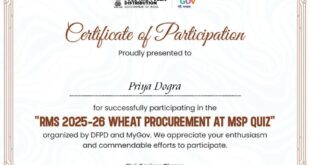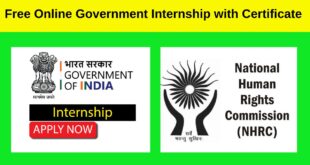Lean Foundations Professional Certification™ (LFPC™) SkillFront Exam Answers
The Skills You’ll Learn:
- Chapter 1. Introduction to the Lean
- Chapter 2. Lean Control, Lean Applications
- Chapter 3. Elimination of Waste Is the Soul of Lean
- Chapter 4. The Five Core Principles of Lean
- Chapter 5. Key Takeaway from Lean Principles
- Chapter 6. Caterpillar’s use of Lean in supply chain sustainability
- Chapter 7. Critical Success Factors
- Chapter 8. Continuous Improvement, Cultural Indicators
- Chapter 9. JIT (Just-in-time) Pull Systems, JIT manufacturing principles
- Chapter 10. Lean Manufacruring
- Chapter 11. Lean 5S, Kaizen, Mean Lean
- Chapter 12. Reliability Centered Maintenance (RCM)
- Chapter 13. Implementing Lean Manufacturing
- Chapter 14. Architecting Lean Enterprises
- Chapter 15. What Is Lean Enterprise?
- Chapter 16. Lean Enterprise Principles
- Chapter 17. What Does It Take To Become A Lean Enterprise?
- Chapter 18. Leadership Commitment, Employee Involvement, Execution
- Chapter 19. Organisational Culture and Change Leadership
- Chapter 20. Risk Management In Lean Enterprises
- Chapter 21. Intersection between Lean Implementation and Risk Management
- Chapter 22. Key Takeaways from Lean Enterprises
- Chapter 23. Lean Project Management
- Chapter 24. Lean Construction
- Chapter 25. Lean Product / Lean Software Development
- Chapter 26. Lean Innovation / Lean Startup
- Chapter 27. How Does Lean Project Management Work?
- Chapter 28. Agile: Fast Feedback in Living Order
100% FREE Lean Foundations Professional Certification™ (LFPC™)
- CERTIFICATION: Lean Foundations Professional Certification™ (LFPC™)
(USD 199.- Value) - BONUS PROGRAM E-BOOK: 98 Pages
(USD 97.- Value) - BONUS PROGRAM AUDIOBOOK: 1 Hour, 55 Minutes, 58 Seconds
(USD 50.- Value) - SHAREABLE & VERIFIABLE DIGITAL BADGE: Your Name Engraved On It, Custom Made For You
(USD 99.- Value) - Here is my Badge:
ENROLL NOW: Lean Foundations Professional Certification™ (LFPC™) SkillFront Certification Exam
For Updates Regarding Exam Answers Join My Whatsapp Group
Certified Associate In Scrum Fundamentals Exam Answers – SkillFront Exam Answers
Foundations Of Business And Entrepreneurship Exam Answers – SkillFront Entrepreneur Program Exam Answers
Information Security Associate Exam Answers – SkillFront Exam Answers
ISO 9001 Quality Management Systems Associate™ Skillfront Certification Exam Answers
ISO/IEC 20000 IT Service Management Associate™ SkillFront Certification Exam Answers
Lean Foundations Professional Certification™ (LFPC™) SkillFront Exam Answers:
QUESTION 1: What is the philosophy of Lean?
- Encourage people to work harder and have targets so that the output will increase.
- Use less of certain resources than normal mass-production systems use to produce comparable output. And provide perfect value to the customer.
- Reducing cost and improving the purchasing power of the individuals.
- All the choices above.
QUESTION 2: Waste reduction is an effective way to increase profitability. Which is one of the seven deadly wastes?
- Overproduction: The production and acquisition of items before they are actually required. It must be stored, managed, and protected.
- Inventory: In the form of raw materials, work-in-progress, or finished goods represents a capital outlay that has not yet produced an income, either by the producer or for the consumer.
- Defects: Prevent the customer from accepting the product produced. The effort to create these defects is wasted.
- All the choices above.
QUESTION 3: With whom will Lean always be associated?
- Toyota Motor Corporation, because most lean tools and techniques were developed by Toyota in Japan beginning in the 1950s.
- Hyundai Motor Company
- Volvo Car Group
- None of the choices above.
QUESTION 4: Which one is Not one of the seven deadly waste types?
- Motion
- Overprocessing
- Taxes
- Transportation
QUESTION 5: What are the main seven types of waste?
- Motion, Transportation, Overprocessing, Overproduction, Inventory, Waiting, Defects.
- Misalignment, Software, Chatting, Waiting, Communication, Money, Electricity.
- Inventory, Entertainment, Storages, Resources, Motion, Overheating, Defects.
- None of the choices above.
QUESTION 6: Which one is a critical success factor related to Lean Sustainability Vision, Mission, Strategy?
- Operations
- Progress
- Sustainability
- All the choices above
QUESTION 7: What is an Indicator of a Culture of Continuous Improvement?
- Reflection: continuously reviewing program policies and seeking feedback, applying when necessary
- System thinking: stepping back and considering the broader context in which Head Start programs operate and understanding that change is incremental.
- Curiosity: asking the “how” and “why” questions about children and families in your program.
- All the choices above.
QUESTION 8: Just-In-Time Production methodology was introduced by which organization?
- Caterpillar
- Toyota
- Lean Association
- Ford
QUESTION 9: Which is NOT a Lean thinking practice?
- Waterfall Project Management Framework
- Kanban
- Kaizen Activities
- SMED (single minute exchange of die)
QUESTION 10: The Lean 5S methodology is created and used for?
- Prevent defects.
- Continuous improvement.
- Workplace organization will make the work process clear among the workers to feel ownership of the process.
- None of the choices above.
QUESTION 11 : Which of the 5S technique requires you to divide and label items and to arrange everything thoughtfully? Everything should have a place and be in place.
- Shine
- Straighten
- Sustain
- Standardize
QUESTION 12: What does the Shine phase in the 5S methodology focuses on?
- Removing all the defects.
- Ensuring that the product is good for selling.
- Reviewing all the items in the workspace.
- Making sure that the workplace is clean and neat.
QUESTION 13: Which one of the techniques/tools below does exclusively focus on the practice of continuous improvement?
- Kanban
- Six Sigma
- Kaizen
- None of the choices above.
QUESTION 14: Lean is a philosophy that focuses on which of the following choices?
- Eliminating mistakes.
- Continuous, gradual improvement.
- Eliminating waste.
- All the choices above.
QUESTION 15: What is the common process analysis tool, which purpose is to prevent errors that cause defects?
- Kaizen
- Kanban
- Poka Yoke
- Six Sigma
QUESTION 16: All maintenance actions can be classified in which of the following categories?
- Alterative Maintenance-Eliminate unsatisfactory conditions by changing system design or use.
- Corrective Maintenance-Restore lost or degraded function.
- Preventive Maintenance-Minimizes the opportunity for function to fail.
- All the choices above.
QUESTION 17: What does PDCA mean?
- Plan, Do, Check and Act.
- Prepare, Deliver, Check and Act.
- Process, Delegating, Control, and Automation.
- None of the choices above.
QUESTION 18: What does Takt Time mean?
- Time is taken to create a unit.
- The required product assembly duration that is needed to match the demand.
- Throughput time.
- All the choices above.
QUESTION 19: Which of the following answers is an activity that does’t add value, is wasteful, or is unproductive?
- Mura
- Mudi
- Muda
- Muri
QUESTION 20: What does SMED mean?
- Social Media Enchanged Devices
- Standard Material Engineering and Deployment.
- Simple Material Engineering Device
- Single-Minute Exchange of Die
QUESTION 21: Which of the following choices is Not important to a lean thinker?
- Team structure and individual empowerment and accountability.
- Full utilization of resources.
- Flow and pull from the customers.
- Value to the customer.
QUESTION 22: What does a Six Sigma program aim to reduce?
- Process variability.
- Inventory.
- Waste.
- Process stability.
QUESTION 23: Which one of the deadly wastes is the worst because it is hard to fight against and causes many of the other wastes?
- Defects.
- Overprocessing.
- Inventory.
- Overproduction.
QUESTION 24: Which one is a Lean Enterprise Principle?
- Pull: Nothing should be produced until there is clear demand or official purchase orders from customers.
- Value: Customers value a certain product or service as it relates to their wants or needs.
- Flow: If any iteration of the value stream is stagnant or inefficient, it is considered wasteful and antithetical to creating customer value.
- All the choices above.
QUESTION 25: Which is Not one of the 3 practices that ensure employee involvement and empowerment to drive sustainable change and imbed it in the culture?
- Communication process.
- Performance evaluation.
- Effective change management.
- Continuous improvement.
QUESTION 26: Which one is a Lean Project Management Principle?
- Identify errors immediately and eliminate them sustainably.
- Establish clear responsibilities, tasks, and competencies at the lowest possible organizational level.
- Define the minimum value-adding work packages and work processes.
- All the choices above.
QUESTION 27: Which one is Not a software development framework based on the values and principles of Agile?
- Waterfall.
- Kanban.
- Scrum.
- Extreme programming (XP).
QUESTION 28: Which of the following is specifically characterized by a focus on continuous improvement, respect for people, and standard work practices?
- Toyota Production System (TPS).
- Lean operations.
- Kanban.
- Just-in-time (JIT)
QUESTION 29: What is a Value Added (VA) Activity?
- Work which is requested by the application team.
- Work which will make the management team proud.
- Work the customer is willing to pay.
- Work which has to be completed immediately.
QUESTION 30: What is a type of lean project?
- Lean Construction.
- Lean Product / Lean Software Development.
- Lean Innovation / Lean Startup.
- All the choices above.
 Priya Dogra – Certification | Jobs | Internships
Priya Dogra – Certification | Jobs | Internships



